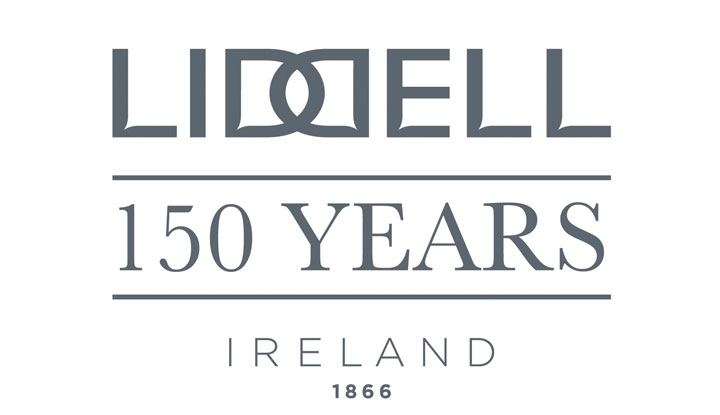
As part of Vision’s ongoing celebrations commemorating 150 successful years of our luxury linen product brand, Liddell; earlier this year we undertook a huge research project which saw Vision representatives travel to Ireland to delve into the brands deep rooted history.
Working alongside a local historian, we uncovered many interesting facts about Ireland and its connections to the linen trade as well as finding out about the fascinating story of William Liddell which we compiled together to create an extensive history book outlining some of Liddell’s captivating story.
1866: Where it All Began
After completing an apprenticeship, William founded William Liddell and Company in 1866. The factory was located in Donaghcloney in Ireland and began William’s aim of making Liddell linen a recognised brand around the world.
1877: Caring for the Employees
It was in this year that William Liddell set up the ‘Factory Society for the Sick’. Before the NHS and pensions became readily available, the society was established to provide a contribution to factory workers in the event of their death to put towards a burial.
1903: Oldest Surviving Liddell Advert Found
William Liddell & Co placed an advert in Century Magazine to advertise their exquisite linen and to showcase the original design and unique qualities of the products. As the magazine ceased in 1930, this makes it the oldest surviving Liddell advert to date.
1908: Winning Gold
Exhibiting at the Franco-British exhibition, William Liddell & Co won a gold medal award at the show which brought them recognition from around the world. This award inspired the company to rename their linen the ‘Gold Medal Collection’.
1912: Setting Sail Aboard the Titanic
During the early 20th century, William Liddell & Co was the preferred linen supplier of the Oceanic Steam Navigation Company, owners of the White Star Line and the RMS Titanic. On April 10th, the RMS Titanic set sail with the luxurious Liddell linens on board only to sink in the Atlantic Ocean days later.
1914 – 1918: Irish Linen Industry Takes a Battering
Because of the First World War, people no longer required ‘quality goods’ and with many of the factory workers leaving to join the war effort, the Irish linen industry began a rapid decline.
1943: Munition Workers
During the Second World War, William hired munition workers to help with producing linen, bombs, bullets and other military essentials. The Liddell factory began producing linen specifically for military aircraft fabric and uniforms and the linen industry flourished in aviation at this time.
1950: A New Strategy
Now that the war was over, William began to focus his efforts on the luxury end of the market. His linens were seen in the RMS Arcadia, The Dorchester Hotel and the world’s first commercial jetliner.
1961: William Ewart Gets a Royal Treat
William Ewart & Sons, one of Liddell’s main competitors, was visited by the Queen and Prince Philip during her tour of Northern Ireland. Only 11 years later, the two companies joined together to become Ewart Liddell, ending a rivalry which spanned nearly 100 years.
1980: Welcoming New Technology
Attempting to keep afloat in a dwindling industry, Ewart Liddell invested heavily in new machinery and technology which meant a reduction in the time it took to create logos and custom designs and therefore reducing turnaround time for their products. It was during this time that Ewart Liddell linen was found in major department stores around the world such as Marks & Spencer, Harrods and Bloomingdales.
1990’s: Continuing the Pursuit of Luxury
Supplying 14 of the world’s leading airlines and going on to create napkins and cushion covers for British Airways Concorde, Ewart Liddell then continued supplying luxury establishments across the globe including the Savoy Hotel and the Burj Al Arab In Dubai.
2004: Bought by Hilden
The now ailing company was acquired by Hilden Manufacturing Ltd, a similarly rich heritage textiles business based in Lancashire. After the region suffered a similar fate to the Irish linen trade, Hilden was one of the few companies still weaving and dyeing in Lancashire.
2008: Saved from the Brink
In September, both brands were acquired by Vision Support Services. Founded by Dan Wright in 2005, the entrepreneur had a long history in textiles. The brands relocated to Blackburn, Lancashire whilst keeping Liddell’s sales office in Ireland and the brands, along with Whitakers, now form the three leading product ranges of the Vision Group.
2013: The Dorchester Relationship
Recognising the long-standing relationship with the Dorchester Hotel, Vision unveiled the latest Liddell designs and collections in a three-day event held at the prestigious establishment. Showcasing new designs, the event attracted the interest of renowned names in the hospitality world.
2015: Turning to Retailers
Working with Vision’s global retail division, the Liddell range can now be found in Lane Crawford in Hong Kong, Takashimaya in Singapore, Jashanmal in Dubai and John Lewis in the UK as well as the world’s most established hospitality brands.
2016: Year-Long Celebrations
Turning 150 is no easy feat and so Vision decided to hold a year-long birthday party to celebrate such a huge achievement. With events including a luxury round-trip on the vintage Belmond British Pullman train, a competition aimed solely at Housekeepers and an unveiling of replica Titanic table linen, it’s definitely been a year to remember for Vision and its luxury Liddell brand. Better still – it’s not over yet!
To find out more about the Liddell brand, its history and pivotal moments that make up the history of Liddell, please visit our history post here.